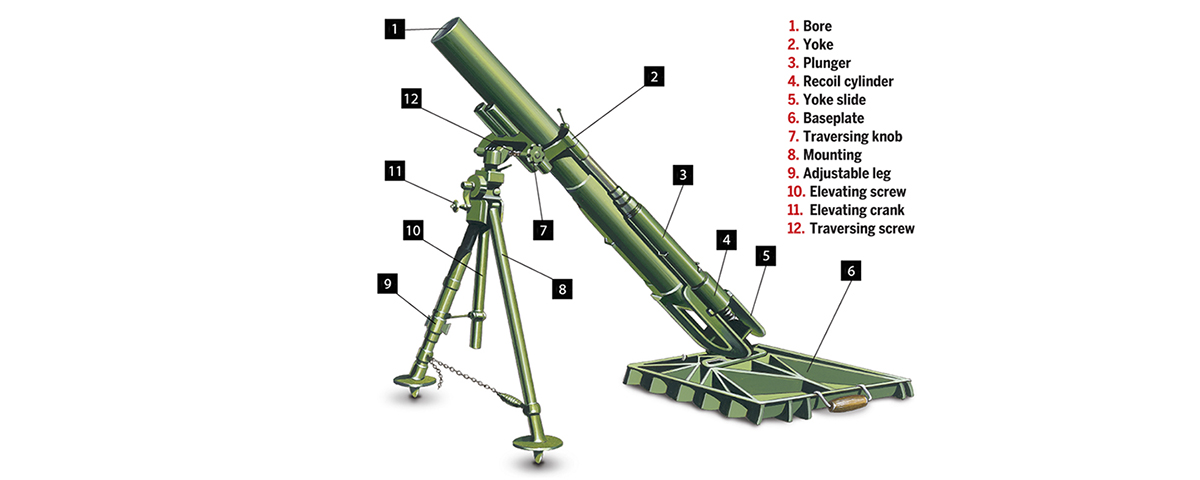Weight: 350 pounds
Barrel length: 4 feet 2 inches
Caliber: 90 mm
Traverse: 10 degrees from centerline
Elevation: 45–80 degrees
Maximum recoil stroke: 5.75 inches
Muzzle velocity: 745 feet per second
Effective range: 4,150 yards
Accepted in 1934 (the year 2594 on Japanese imperial calendars) and entering service the next year, the Type 94 mortar, with its 90 mm bore, fell between the medium and heavy classes of mortar. Certainly the weapon was hefty and cumbersome, tipping the scales at 350 pounds with a U-shaped hydropneumatic recoil system itself weighing 104 pounds.
Although it was a mainstay of infantry support during the 1937 invasion of China and saw use in the subsequent Philippine and Guadalcanal campaigns, the Type 94 was declared obsolete in 1940 following the introduction of the Type 97. The latter, though using a similar recoil system, weighed just 145 pounds, making it far more preferable for mobile jungle operations in Southeast Asia and the Pacific. Both mortars fired the same 11.5-pound high-explosive bomb, however, and as the Type 94 remained an effective weapon, the Japanese army continued using it in the open terrain of China for the duration of the war.
In addition to the HE round, the Japanese developed an incendiary projectile that on detonation scattered 40 pellets filled with white phosphorus and carbon disulfide to ignite such soft targets as unarmored vehicles and ammunition dumps. It proved especially devastating to densely packed Chinese villages. The closest the Chinese National Revolutionary Army could come to matching the Japanese 90 mm mortars from its mixed bag of imports was the Brandt Mle 27/31, an 81 mm design by Edgar Brandt that was standard for the French army, and the Soviet-produced 82-BM-37 batalionniy minomet (battalion mortar), an improvement on the Brandt design that fired an 82 mm round. Although both were good weapons, their Japanese counterparts outclassed them in the field. Later in the war, however, a handful of captured Type 94 and Type 97 mortars also found their way into Chinese use. MH





